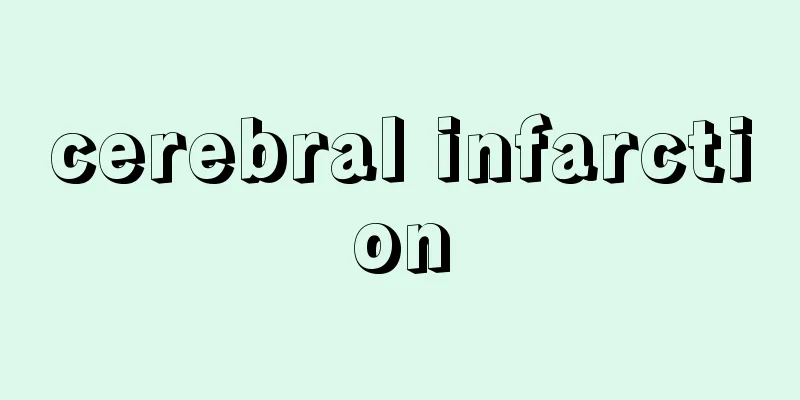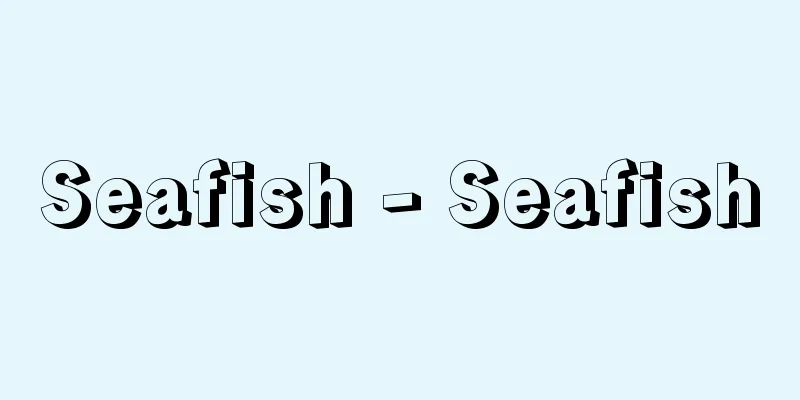cerebral infarction

|
What kind of disease is it? ●Main symptoms and progression Cerebral infarction is a disease in which blood flow in the cerebral artery is stopped by a blood clot (thrombus), impairing the function of brain cells beyond that point. Cerebral thrombosis is caused by a blood clot formed as a result of worsening arteriosclerosis in the brain itself, while cerebral embolism occurs when a blood clot or fatty mass from another part of the body, such as the heart, finds its way into the blood vessels of the brain. Cerebral thrombosis is further divided into two types: lacunar infarction and atherosclerotic infarction. Lacunar infarction is a condition in which a very small blood vessel deep in the brain becomes blocked, and often results in multiple small infarctions, with many very small infarctions that do not cause symptoms. Lacunar means a small hole. On the other hand, atherosclerosis occurs when a blood clot forms in the large cerebral arteries or carotid arteries due to progression of arteriosclerosis, and the blood clot breaks off from the blood vessel wall and travels away, blocking the blood vessels deep inside the brain. Symptoms vary depending on the location of the blood clot, but common symptoms include hemiplegia, decreased sensation, headache, dizziness, nausea, and vomiting, and in some cases, loss of consciousness or coma. Even if the patient recovers, they may be left with paralysis or some other disability, or develop vascular dementia. Cerebral thrombosis often occurs when the patient is resting, such as during sleep, and symptoms progress gradually over a period of several hours to several days, whereas cerebral embolism occurs suddenly and worsens within a matter of minutes. Some patients experience a "transient ischemic attack" prior to a cerebral infarction, but this is a very mild loss of consciousness or paralysis, and is a temporary attack that lasts for a few minutes to a few hours, or at most a day and night, so the patient and those around them do not notice it, and even if they do notice it, most patients are left untreated and do not go to a medical facility. If the condition of the cerebral arteries is improved at this stage, a major attack can be prevented. If a stroke is suspected, it is important to seek treatment as soon as possible. Appropriate treatment within the first few hours of the stroke will have a major impact on the patient's subsequent course and aftereffects. ● Causes of the disease and how symptoms develop In the case of cerebral thrombosis, the cause is cerebral arteriosclerosis. When the elasticity of blood vessels decreases or the blood vessel walls become thicker and the blood passage narrows, blood flow becomes more difficult and blood becomes more likely to clot. The blood clot formed in this way stops the blood flow, and the brain cells that receive oxygen from this artery become oxygen-deficient and become damaged, causing various symptoms. In the case of cerebral embolism, a blood clot formed somewhere other than the brain (often originating in the heart), a fatty mass, tumor cells, or in some cases bacteria, is carried via the bloodstream and becomes lodged in an artery in the brain, stopping blood flow, causing a stroke. ●Characteristics of the disease Cerebral infarction and cerebral hemorrhage are collectively called strokes, which are counted as one of the three leading causes of death in Japan. The incidence of strokes increases with age, and about two-thirds of strokes occur in people aged 65 or older. In particular, the incidence of cerebral infarction rises sharply with age. The incidence of strokes in men is 1.7 times higher than in women. In addition, high blood pressure, diabetes, and dyslipidemia are major risk factors for cerebral infarction. EBM checks on common treatments and care [Treatment and care] Immediately hospitalize the patient to an appropriate medical institution [Rating] ☆☆☆☆☆ [Evaluation points] Highly reliable research reports have confirmed that receiving treatment in a stroke unit (team medical care) during the acute phase reduces the mortality rate after stroke and enables patients to be discharged earlier. Furthermore, it has been reported that it reduces aftereffects that interfere with daily life and allows patients to maintain a life that suits them (improving quality of life). A stroke unit is a medical team consisting of not only doctors, but also nurses, physical therapists, occupational therapists, speech-language-hearing pathologists, medical social workers, etc., each of whom utilizes their expertise and cooperates in various aspects to provide treatment and care. (1)-(4) [Treatment and care] Manage blood pressure with medication as necessary [Rating] ☆☆☆☆☆ [Evaluation points] There is highly reliable clinical research that shows that when blood pressure is suddenly lowered using antihypertensive drugs in patients with acute cerebral infarction, various neurological symptoms such as paralysis of the limbs and decreased sensation worsen. Antihypertensive therapy is not performed unless there is also a dissecting aortic aneurysm, acute myocardial infarction, or hypertensive intracerebral hemorrhage. However, if thrombolytic therapy is performed, it is recommended to lower blood pressure to a certain level. Guidelines compiled by the Ministry of Health, Labor and Welfare and the Japanese Society of Hypertension also recommend managing blood pressure according to the treatment method, the presence or absence of complications, and the timing. In addition, since hypertension is the greatest risk factor for cerebral infarction, it is recommended to control blood pressure even in the chronic phase. (5)-(7) [Treatment and care] Dissolves blood clots [Rating] ☆☆☆☆☆ [Evaluation points] Thrombolytic therapy: There is a highly reliable clinical study report that clarifies the effectiveness of intravenous administration of rt-PA (recombinant t-PA, a drug that dissolves blood clots) within 4.5 hours of the onset of an attack, and intra-arterial administration of pro-urokinase within 6 hours. However, thrombolytic therapy can cause side effects such as serious bleeding symptoms, so the indications for this therapy must be carefully considered. Anticoagulant therapy/the use of heparin sodium (a drug to prevent blood clots) in the acute phase is not recommended. For atherosclerotic cerebral infarction within 48 hours of onset, there is a study showing the effectiveness of the antithrombin drug argatroban. Antiplatelet therapy: There are highly reliable research reports that using aspirin (a drug that prevents blood clots by suppressing the activity of platelets, which have the function of clotting blood) within 48 hours of the onset of an attack can prevent the recurrence of cerebral infarction and improve the progress of the disease in the long term. There are also highly reliable clinical research reports that sodium ozagrel improved motor paralysis in patients with lacunar infarction. (1)(8)-(11) [Treatment and care] Reduce intracranial pressure [Rating] ☆☆☆☆ [Evaluation points] Diuretics such as D-mannitol and concentrated glycerin are used to reduce intracranial pressure. Brain swelling (cerebral edema) can be fatal in the worst case, so this can be an important treatment depending on the degree of cerebral edema. This has been confirmed by highly reliable clinical studies. (12)(13) Checking commonly used drugs with EBM Antihypertensive drug [Drug name] Perdipine (Nicardipine hydrochloride) (1) [Rating] ☆☆☆ [Drug name] Herbesser (diltiazem hydrochloride) [Rating] ☆☆ [Drug name] Nivadil (nilvadipine) [Rating] ☆☆ [Evaluation points] Used to manage blood pressure. Clinical studies have confirmed that a rapid drop in blood pressure worsens neurological symptoms. During the acute phase, blood pressure must be managed according to guidelines. In addition, since hypertension is the biggest risk factor for cerebral infarction, it is recommended to control blood pressure in the chronic phase as well. Cerebral circulation and metabolism improving drug [Drug name] Cataclot/Xambon (Ozagrel sodium) (1)(11) [Rating] ☆☆☆☆ [Drug name] Radicut (Edaravone) (14) [Rating] ☆☆☆☆ [Evaluation Points] There are highly reliable research reports on the effectiveness of Edaravone in eliminating free radicals (such as active oxygen) that are released from brain cells damaged by the cessation of blood flow. Eliminating free radicals can prevent the worsening of cerebral infarction. Thrombolytic drug [Medicinal use] rt-PA [Drug name] Activacin/Glutopa (alteplase) (1)(8) [Rating] ☆☆☆☆☆ [Medicinal uses] [Drug name] Uronase (urokinase) (1) [Rating] ☆☆☆☆ [Evaluation points] This is a drug that dissolves blood clots. For patients who can be treated within 4.5 hours of onset, intravenous administration of rt-PA (alteplase) is recommended, and there are highly reliable research reports showing its effectiveness in improving symptoms. There is also a clinical study showing that urokinase was effective for patients within 6 hours of onset. However, thrombolytic therapy is only performed in specialized facilities due to the risk of bleeding. Antithrombotic drugs [Drug name] Slonnon HI/Novastan (argatroban) (9) [Rating] ☆☆☆☆ [Drug name] Heparin sodium (Heparin sodium) (1) [Rating] ☆☆☆ [Drug name] Bayer aspirin (aspirin) (10) [Rating] ☆☆☆☆☆ [Evaluation points] The effectiveness of aspirin in the acute phase has been proven at a global level, but its effectiveness is not very large. In addition, the effectiveness of argatroban has only been proven in Japanese studies. Heparin sodium does not improve the prognosis of patients in the acute phase, but its preventive effect on deep vein thrombosis and pulmonary embolism has been proven. Medicine to improve cerebral edema [Drug name] Glyceol (concentrated glycerin and fructose mixture) (12) [Rating] ☆☆☆☆ [Drug name] Mannitol (D-mannitol) (13) [Rating] ☆☆ [Evaluation points] There is a highly reliable clinical study that shows that concentrated glycerin reduced the death rate within 14 days after onset. D-mannitol is supported by expert opinion and experience. Overall, the most reliable treatment method at present <br /> Go to a specialized facility immediately if a seizure occurs If treatment can be started before the brain cells at the end of the blocked blood vessel die completely, various functions can be prevented from being impaired. How quickly a diagnosis can be made and treatment can be started after a seizure is a major factor in determining the course of the disease thereafter. Many studies have proven the effectiveness of early, strict patient management by a team of specialists from various fields (stroke unit), as well as the use of Bayer Aspirin (aspirin) within 48 hours of the onset of a seizure. At present, these are reliable treatment methods. If you experience an attack, it is important to go to a specialized hospital as soon as possible so that you can receive appropriate treatment from specialized staff. People at high risk, such as those with high blood pressure, diabetes, or dyslipidemia, should always look for specialized facilities. Thrombolytic therapy within 4.5 hours of attack In the hyperacute phase (within 4.5 hours of onset), intravenous administration of rt-PA to dissolve the blood clots blocking the blood vessels (thrombolytic therapy) may potentially save brain cells without killing them. If the treatment is successful, symptoms can improve dramatically. However, because the effect of dissolving blood clots is a fine line between the risk of bleeding, a serious complication, thrombolytic therapy is only performed at specialized medical institutions with a well-equipped treatment system. In addition, whether or not a patient is suitable for thrombolytic therapy is considered very carefully. Patients who have or are at high risk of cerebral hemorrhage, or patients who are bleeding anywhere in the body, such as the digestive tract or urinary tract, cannot receive thrombolytic therapy using rt-PA. Patients who have severe liver or kidney disorders, severe high blood pressure or diabetes, or are 75 years of age or older may not be suitable candidates for treatment due to their high risk of bleeding. Preventing further deterioration and protecting brain cells if early treatment is not possible If it takes some time to reach a specialized facility after the attack and most of the brain cells have already died, the goal of treatment is to prevent the infarction from progressing any further and to minimize the damage to brain cells, rather than trying to open the blood vessels. Aspirin and drugs that improve cerebral circulation and metabolism are used. Further international research is needed into the effectiveness of antithrombin drugs, antiplatelet drugs, and brain protective drugs.However, the effectiveness of the antithrombin drug Slonnon HI/Novastan (argatroban), which dissolves blood clots, the antiplatelet drug Cataclot/Xambon (sodium ozagrel), and the brain protective drug (which eliminates active oxygen and prevents brain cells from becoming oxidized and causing damage to spread) Radicut (edaravone) has only been concluded in double-blind studies conducted in Japan.Verification from an international perspective will be necessary in the future. (1)Jauch EC, Saver JL, Adams HP Jr, et al.Guidelines for the early management of patients with acute ischemic stroke: a guideline for healthcare professionals from the American Heart Association/American Stroke Association.Stroke. 2013;44:870-947. Source: "EBM: A book that explains correct treatment" Information about the book "EBM: A book that explains correct treatment" |
|
どんな病気でしょうか? ●おもな症状と経過 脳梗塞(のうこうそく)は、血のかたまり(血栓(けっせん))によって脳動脈の血液の流れが止まり、そこから先の脳細胞の働きが損なわれる病気です。 脳そのものの動脈硬化が悪化してできた血栓によっておこるものを脳血栓、体のほかの場所、たとえば心臓などでできた血栓や脂肪のかたまりが、脳の血管に流れついたためにおこるものを脳塞栓(のうそくせん)といいます。 脳血栓はさらに、ラクナ梗塞とアテローム梗塞の2種類に分かれます。ラクナ梗塞とは、脳の奥のほうにある非常に細い血管がつまる状態で、小さな梗塞が多発することが多く、症状が現れないごく小さな梗塞も少なくありません。ラクナとは小さな穴という意味です。 一方、アテローム梗塞とは、脳の太い動脈や頸動脈(けいどうみゃく)の動脈硬化が進行して血栓ができたり、血栓が血管の壁からはがれて流れていき、脳の奥の血管をつまらせてしまうものです。 血栓がつまった場所により症状はさまざまですが、半身麻痺(はんしんまひ)、感覚の低下、頭痛、めまい、吐き気・嘔吐などがよくみられるほか、意識障害や昏睡(こんすい)状態に陥る場合もあります。回復しても、麻痺やなんらかの障害が残ったり、脳血管性の認知症を招いたりすることがあります。 脳血栓の場合は、睡眠中など安静にしているときにおこることが多く、数時間から数日かけて徐々に症状が進んでいきますが、脳塞栓の場合は急激に症状が発生し、数分の間に悪化してしまいます。脳梗塞に先だって、「一過性脳虚血発作(いっかせいのうきょけつほっさ)」という症状をおこしている患者さんもいますが、これは非常に軽い意識障害や麻痺で、しかも数分から数時間、長くても一昼夜といった一時的な発作であるため、本人も周囲も気づかなかったり、気づいたとしてもほとんどが医療施設に行かないまま放置されたりするようです。この段階で脳動脈の状態の改善を行えば、大きな発作を予防することができます。 脳梗塞が疑われる発作がおきた場合には、一刻も早く治療を行うことが重要で、とくに発作がおきてから数時間以内の適切な処置が、その後の経過や後遺症を大きく左右します。 ●病気の原因や症状がおこってくるしくみ 脳血栓の場合は、脳の動脈硬化が原因となります。血管の弾力性が低下したり、血管の壁の厚みが増して血液の通路が狭くなったりすると、血液が流れにくくなってくるため、血液が固まりやすくなります。こうしてできてしまった血栓が血液の流れを止め、この動脈から酸素の供給を受けていた脳細胞が酸素不足をきたし、障害を受けるために、いろいろな症状がおこってきます。 脳塞栓の場合は、脳以外のどこかでできた血栓(心臓で生じることが多い)や脂肪のかたまり、腫瘍細胞(しゅようさいぼう)、場合によっては細菌などが血流にのって運ばれ、脳の動脈につまって、血液の流れを止めてしまうことで、発作が現れます。 ●病気の特徴 脳梗塞と脳出血を合わせて脳卒中(のうそっちゅう)といいますが、これは、日本人の三大死亡原因の一つに数えられています。加齢とともに、脳卒中の発症率は増加し、脳卒中の約3分の2は、65歳以上のお年寄りに発生しています。とくに、脳梗塞の発症率は加齢とともに急激に上昇します。男性は、女性と比べて脳卒中発症率は1.7倍と高くなっています。 また、高血圧、糖尿病、脂質異常症などは脳梗塞の大きな危険因子となっています。 よく行われている治療とケアをEBMでチェック [治療とケア]ただちに適切な医療機関に入院する [評価]☆☆☆☆☆ [評価のポイント] 急性期にストロークユニット(チーム医療)で治療を受けると脳卒中後の死亡率が低下し、早期に退院できることが非常に信頼性の高い研究報告によって確認されています。さらに、病後の生活についても、日常生活を営むうえで支障をきたすような後遺症を減らし、その人らしい生活を保てるようにする(生活の質を改善する)ことが報告されています。 ストロークユニットとは医師だけではなく、看護師、理学療法士、作業療法士、言語聴覚士、メディカルソーシャルワーカーなどで構成され、それぞれのメンバーが専門性を生かし、いろいろな側面から協力して治療とケアを行うチーム医療のことです。(1)~(4) [治療とケア]必要に応じ、薬を用いて血圧を管理する [評価]☆☆☆☆☆ [評価のポイント] 急性期の脳梗塞の患者さんに降圧薬を用いて急激に血圧を下げると、手足の麻痺や感覚の低下などいろいろな神経症状が悪化するという非常に信頼性の高い臨床研究があります。解離性大動脈瘤(かいりせいだいどうみゃくりゅう)、急性心筋梗塞(きゅうせいしんきんこうそく)、高血圧性脳内出血(こうけつあつせいのうないしゅっけつ)などを合併していない限り降圧療法は行いません。ただし、血栓溶解療法を行う場合は、一定のレベルまで降圧することが推奨されています。厚生労働省や日本高血圧学会がまとめたガイドラインでも、治療法、合併症の有無、時期などに応じて血圧を管理することが推奨されています。また、高血圧は脳梗塞の最大の危険因子なので、慢性期にも血圧をコントロールすることが推奨されています。(5)~(7) [治療とケア]血栓を溶解する [評価]☆☆☆☆☆ [評価のポイント] 血栓溶解療法/発作がおきてから4.5時間以内に血栓溶解薬であるrt-PA(遺伝子組換え式のt-PA、血栓を溶かす薬)を静脈内投与した場合と、同じく6時間以内にプロウロキナーゼを動脈内投与した場合の有効性を明らかにした非常に信頼性の高い臨床研究報告があります。一方で、血栓溶解療法は深刻な出血症状の副作用を引きおこすこともあるため、適応については慎重に判断する必要があります。 抗凝固療法/急性期のヘパリンナトリウム(血栓ができるのを予防する薬)の使用は勧められません。発症48時間以内のアテローム脳梗塞については、抗トロンビン薬のアルガトロバンの有効性を示す研究があります。 抗血小板療法/発作がおきてから48時間以内にアスピリン(血液を固まらせる働きをもつ血小板の働きを抑えて、血栓ができるのを予防する薬)を用いると、脳梗塞の再発を防ぎ、長期にわたって病後の経過を改善するという非常に信頼性の高い研究報告があります。また、オザグレルナトリウムがラクナ梗塞の患者さんで運動麻痺を改善したという非常に信頼性の高い臨床研究報告があります。(1)(8)~(11) [治療とケア]脳圧を下げる [評価]☆☆☆☆ [評価のポイント] 脳圧を下げるためにD-マンニトール、濃グリセリンなどの利尿薬が使用されています。脳の腫(は)れ(脳浮腫(のうふしゅ))によって、最悪の場合は死に至る可能性もあるので、脳浮腫の程度によっては重要な治療となります。このことは非常に信頼性の高い臨床研究によって確認されています。(12)(13) よく使われている薬をEBMでチェック 降圧薬 [薬名]ペルジピン(ニカルジピン塩酸塩)(1) [評価]☆☆☆ [薬名]ヘルベッサー(ジルチアゼム塩酸塩) [評価]☆☆ [薬名]ニバジール(ニルバジピン) [評価]☆☆ [評価のポイント] 血圧の管理のために使用されます。急激な降圧は神経症状を悪化させることが臨床研究によって確認されています。急性期ではガイドラインに従って血圧を管理する必要があります。また、高血圧は脳梗塞の最大の危険因子なので、慢性期にも血圧をコントロールすることが推奨されています。 脳循環・代謝改善薬 [薬名]カタクロット/キサンボン(オザグレルナトリウム)(1)(11) [評価]☆☆☆☆ [薬名]ラジカット(エダラボン)(14) [評価]☆☆☆☆ [評価のポイント] 血流が止まったために障害を受けた脳細胞から放出されるフリーラジカル(活性酸素など)を消去するエダラボンの有効性については、非常に信頼性の高い研究報告があります。フリーラジカルを消去することによって、脳梗塞の悪化を防ぐことができます。 血栓溶解薬 [薬用途]rt-PA [薬名]アクチバシン/グルトパ(アルテプラーゼ)(1)(8) [評価]☆☆☆☆☆ [薬用途] [薬名]ウロナーゼ(ウロキナーゼ)(1) [評価]☆☆☆☆ [評価のポイント] 血栓を溶解する薬です。発症4.5時間以内に治療可能な患者さんに対しては、rt-PA(アルテプラーゼ)の静脈内投与が推奨されており、改善に有効との非常に信頼性の高い研究報告があります。また、発症から6時間以内の患者さんにはウロキナーゼが有効だったとする臨床研究があります。ただし、血栓溶解療法には出血の危険があるため、専門的な施設でしか実施されていません。 抗血栓薬 [薬名]スロンノンHI/ノバスタン(アルガトロバン)(9) [評価]☆☆☆☆ [薬名]ヘパリンナトリウム(ヘパリンナトリウム)(1) [評価]☆☆☆ [薬名]バイアスピリン(アスピリン)(10) [評価]☆☆☆☆☆ [評価のポイント] 急性期ではアスピリンの有効性が世界レベルで証明されていますが、その有効性はあまり大きくはありません。また、アルガトロバンの有効性は日本の研究でしか証明されていません。ヘパリンナトリウムは急性期の患者さんの予後を改善する効果はありませんが、深部静脈血栓症や肺塞栓の予防効果は証明されています。 脳浮腫を改善する薬 [薬名]グリセオール(濃グリセリン・果糖配合液)(12) [評価]☆☆☆☆ [薬名]マンニットール(D-マンニトール)(13) [評価]☆☆ [評価のポイント] 濃グリセリンは発症後14日以内の死亡を減少させたという非常に信頼性の高い臨床研究があります。D-マンニトールは、専門家の意見や経験から支持されています。 総合的に見て現在もっとも確かな治療法 発作がおきたらただちに専門施設へ行く つまった血管の先の脳細胞が完全に死んでしまう前に治療が始められれば、いろいろな機能が損なわれずにすむことになります。発作後どれだけ早く診断を下し、治療を開始できるかが、その後の経過を決める大きなポイントです。早期にいろいろな職種の専門家がチームを組んで厳重に患者さんを管理すること(ストロークユニット)、また、発作がおきてから48時間以内に、バイアスピリン(アスピリン)を用いることについて、多くの研究で有効性が証明されています。現時点では、これらが信頼できる治療手段です。 発作がおきたなら、できるだけ早く専門のスタッフによって適切な処置が行われるように、専門の病院へ行くことが大切です。高血圧や糖尿病、脂質異常症があるなど危険率の高い人は、日ごろから専門の施設を探しておくべきでしょう。 発作がおきて4.5時間以内なら血栓溶解療法を 超急性期(発症4.5時間以内)であれば、rt-PAを静脈内投与して血管をつまらせている血栓を溶かすこと(血栓溶解療法)で、脳細胞を死なせずに救える可能性が期待できます。治療がうまくいった場合は、劇的な症状の改善がみられます。しかし、血栓を溶かす作用は出血という重大な合併症をおこす可能性と紙一重でもあるため、血栓溶解療法は治療体制の整った専門の医療機関でのみ実施されます。また、血栓溶解療法に適応するかどうかも、非常に慎重に検討されます。 脳出血がある、またはその恐れが高い患者さん、消化管や尿路など体のどこかが出血している患者さんは、rt-PAによる血栓溶解療法を受けることはできません。肝臓や腎臓に重度の障害がある、重い高血圧や糖尿病がある、75歳以上の高齢者なども出血の危険が高いことから治療の適応とならないことがあります。 早期の対応ができなかった場合にはさらなる悪化を防ぎ、脳細胞を保護する 発作がおきてから専門施設へ行くまでにある程度時間がかかり、脳細胞がほとんど死んでしまった状態になっている場合には、血管の開通を目指すより、梗塞がこれ以上進展するのを防ぎ、ダメージを受ける脳細胞をできるだけ少なくすることが治療の目的となります。アスピリンや脳循環・代謝改善薬を用います。 抗トロンビン薬、抗血小板薬、脳保護薬の有効性はさらに国際的研究を なお、血栓を溶解する目的の抗トロンビン薬・スロンノンHI/ノバスタン(アルガトロバン)、抗血小板薬・カタクロット/キサンボン(オザグレルナトリウム)、脳保護薬(活性酸素を消去し、脳細胞が酸化され障害が広がるのを抑える)・ラジカット(エダラボン)はわが国で行われた二重盲検試験(にじゅうもうけんしけん)でしか有効との結論に達していません。国際的な視点からの検証が、将来必要になるでしょう。 (1)Jauch EC, Saver JL, Adams HP Jr, et al.Guidelines for the early management of patients with acute ischemic stroke: a guideline for healthcare professionals from the American Heart Association/American Stroke Association.Stroke. 2013;44:870-947. 出典 法研「EBM 正しい治療がわかる本」EBM 正しい治療がわかる本について 情報 |
Recommend
Bernal Díaz del Castillo
1492?-1583? A military chronicler of H. Cortes'...
Common people - common people
Historically, and particularly in legal history, ...
Prouvé, V.
The origins of the Nancy School date back to 1878...
Air sac (balloon) - Yesterday
…They are also called balloons because they are l...
Boundary determination suit - Kyokaikakutei no Uttae (English: Grenzscheidungsklage)
A lawsuit in which the court requests that the bou...
Phaeoceros laevis (English spelling)
…There are about 200 species in 6 genera worldwid...
Poelzig (English spelling) Hans Poelzig
German architect. Born and died in Berlin. Studie...
Come
…Generally, shrines have a variety of reasons for...
Tanagra dolls - Tanagra figurines
Small painted terracotta statues produced in anci...
Jingi - righteousness
〘Noun〙① Benevolence and righteousness. "Benev...
Call quality - tsuuwahinshitsu (English) speech quality
A term used to quantitatively express how clearly ...
Mosque of Suleiman the Magnificent - Mosque of Suleiman the Magnificent (English name) Süleymaniye Cami
This mosque is located in Istanbul. It was built b...
Pygmy - Pygmy (English spelling)
In anthropology, it is a general term for an ethn...
Midway
…Japan completed the Shoukaku and Zuikaku just be...
Asano Yoshinaga
A military commander in the Momoyama and early Ed...









